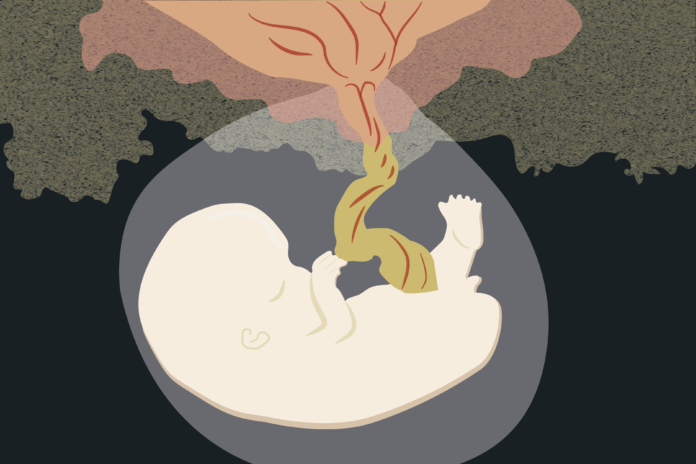The NHIP, or the neuronal-hypoxia-induced placental-associated gene, is vital to reducing risks of developing autism spectrum disorder (ASD) by protecting early fetal brain development
By BRANDON NGUYEN — science@theaggie.org
According to the Center for Disease Control and Prevention, one in 44 children are diagnosed with autism spectrum disorder (ASD). Currently, there is no molecular test that can directly assess and provide a complete diagnosis of ASD during pregnancy or for children under three years old.
In a recent study conducted by the UC Davis MIND Institute, scientists uncovered a gene on human chromosome 22 that had never been studied before and could provide a molecular marker for assessing a child’s risk of ASD following birth. Dr. Janine LaSalle, the principal investigator on the study and a professor of microbiology and immunology at the UC Davis School of Medicine, studies epigenetics, a field that incorporates both environmental stressors and genetics that can affect DNA expression. The LaSalle lab focused on methylation of DNA as a marker for changes in the epigenome.
“The uniqueness of the placental landscape of DNA methylation could be fingerprints of the genes that had been expressed, maybe differentially,” LaSalle said. “Because you can’t know at birth what’s happening to genes in the fetus’ brain, you want to know what happened previously because we are taking samples of placenta after birth. Transcription is great if you want to know what’s going on in that tissue […] when you capture it, but the reason why we study methylation is because if you want to know something about the past, methylation is a much better marker for that.”
The neonatal epigenome can uniquely and accurately reflect past interactions between genetic and environmental factors during early development in the womb. The placenta has recently become a promising surrogate tissue of focus in studying genes linked to fetal brain function, as it is often discarded following birth. By studying changes in the methylation of genomes, or methylomes, LaSalle hoped to uncover a potential gene marker for autism in placental tissue.
Dr. Yihui Zhu, the first author of the study and a postdoctoral in LaSalle’s lab, described the gene they uncovered on chromosome 22 through sequencing the methylome in 204 placental samples.
“We found that the NHIP, or neuronal-hypoxia-inducible placenta-associated gene is active in the brain, responsive to oxidative stress and influences expression of other known genes associated with autism,” Yihui said. “When we overexpressed the gene, we found that placental tissue underwent many rounds of cell division, so the gene’s function is involved in inducing cell division. In most pregnancies, the placenta experiences some inevitable levels of stress, and we think that NHIP is there to minimize the effects of excessive oxidative stress.”
Oxidative stress is an imbalance in free radicals and antioxidants throughout the body that can result from environmental stressors such as air pollution and pesticides. Hypoxia is one form of oxidative stress during which tissues experience a state of low oxygen levels which can lead to cell and tissue damage. By inducing cell division in response to oxidative stress, NHIP enables placental cells to increase contact with maternal blood vessels to reestablish sufficient oxygen levels important for early brain development.
Researchers at LaSalle’s lab found that, in the placental tissue of children diagnosed with autism and placed in the “with ASD” group, NHIP expression levels were lower than those of children who were placed in the “typically developing” group.
Dr. Antonio Gomez, a postdoctoral at LaSalle’s lab and second author of the study, explained why NHIP is a pivotal first step toward providing behavioral risk assessments for earlier intervention.
“By the time that a child is age three, and they have been diagnosed with autism, we have a big window of birth to three years of age in which we could have offered medical treatments or educational interventions to facilitate a child’s development,” Gomez said. “If we find that NHIP and potentially other genes are truly linked markers of autism diagnosis once a child is born, we can analyze the placenta of every child and confidently say this child has a risk for potentially developing autism. And now that we know that the child has only been born for a few weeks, let’s do some sort of intervention, so that we can help lessen the detrimental effects of autism or potentially even avoid it altogether.”
With the discovery of NHIP as a potential gene fingerprint for assessing the risk of ASD in newborns, LaSalle echoed sentiments of optimism, highlighting how the effects of ASD can be better mitigated with early medical and behavioral intervention.
“If you can figure out the risk based on the mother’s and father’s genetics, then you can intervene with known behavioral interventions, but I’m also potentially excited about NHIP,” LaSalle said. “If it’s truly protective against oxidative stress in its function that we concluded in our study, we could potentially give NHIP exogenously as a medicine. We still have a long way to go [before that’s feasible], but [it has] potential as a factor that could be added for […] gene therapy in the future.”
Written by: Brandon Nguyen — science@theaggie.org





